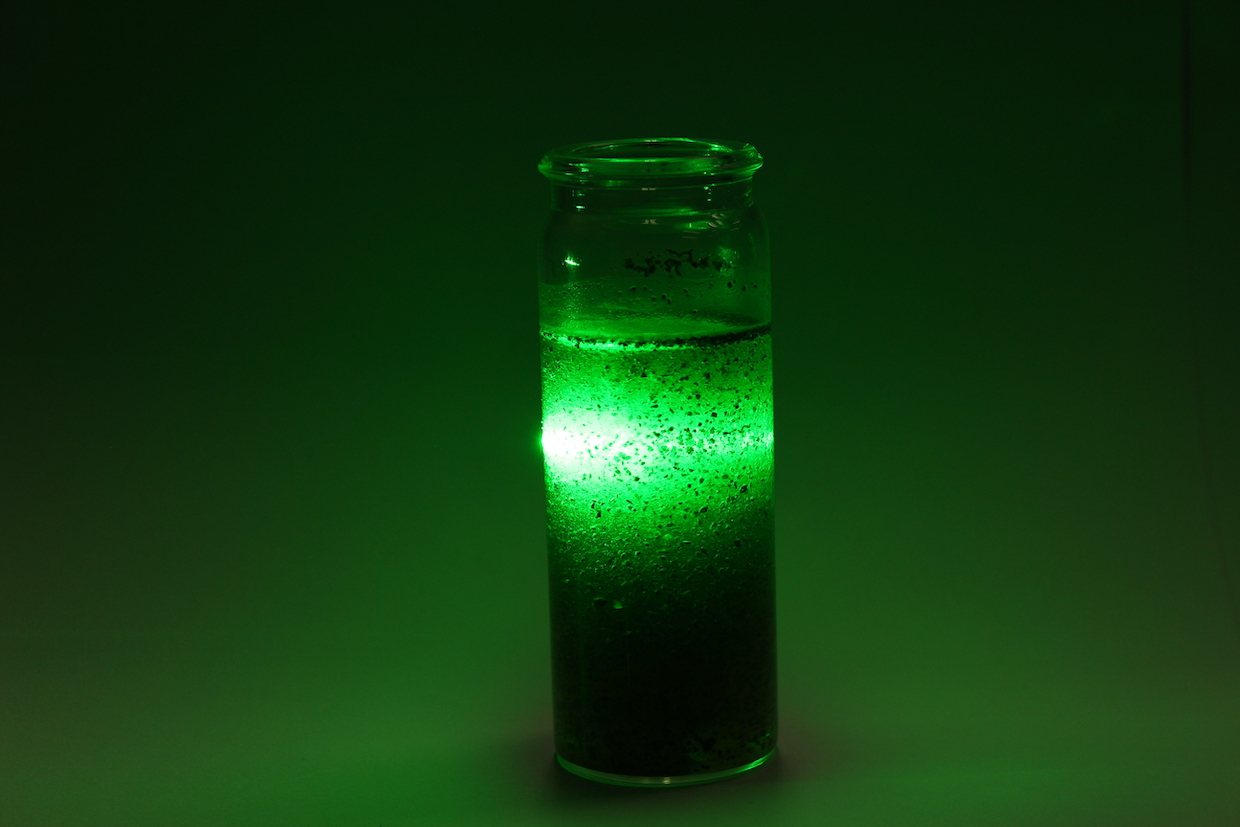Researchers in Germany have successfully used Nd:YAG lasers to speed up coffee extractions in cold water, essentially making the first laser cold brew.
Preliminary results published in April in the science journal Nature indicate that with the help of lasers, a cold brewed coffee drink that is similar in character to brew made by immersing grounds in water for 12-24 hours can be produced in as little as three minutes.
“My idea though was inspired by the TV series ‘The Big Bang Theory’ in which the actors irradiate everything possible with a laser. Why not try this with coffee powder?” Dr. Anna Ziefuss of the University of Duisburg-Essen (UDE) and Center for Nanointegration Duisburg-Essen (CENIDE), told DCN. “Well, from then on, the idea of cold extraction of aroma compounds via pulsed lasers was born, and developed quite fast towards the production of cold brew coffee.”
Ziefuss lead a team in a series of experiments involving beams of a carefully calibrated, green-colored Nd:YAG laser in pulses at a slurry of coffee grounds and water.
The laboratory laser system zapped the coffee roughly 80,000 times per second for three minutes. The treatment never raised the temperature of the water by more than a few degrees, and the finished brew was filtered using standard paper coffee filters.
The coffee was a Costa Rica SHB EP Tarrazú, sourced from Vienna-based Coffee Pirates, that was added to water on its tenth day off roast.
“As we started to work on this topic, we were rather inexperienced in the field of food technology, and especially coffee,” Ziefuss said. “However, with the help of our analytical chemistry department, we analyzed the head-pace and liquid phase of the final products and published the first story in NPJ Food Science.”
The researchers’ analysis indicated a caffeine concentration of 25 milligrams per 100 milliliters of finished brew. Liquid chromatography documented an alkaloid content comparable to traditional cold-brewed coffee, while gas chromatography indicated preservation of semi-volatile substances found through cold brewing as opposed to in a hot brew. The team did not not measure the TDS or Brix of the finished brew.
Food engineer Tina Friedenauer, who has joined Ziefuss in further developing the technology, sees potential for the laser treatment in coffee as well as other liquid products like extracts or syrups.
“We are currently working on extending the process to a wide range of natural components and have meanwhile developed a universally applicable extraction process that combines the advantages of hot and cold extraction,” Friedenauer told DCN. “With our lasers, we are able to produce highly aromatic extracts in a very short time, without losing volatile aroma components, because, as mentioned before, our laser process does not lead to any heating of the product. The natural extract obtained is water-based and can, of course, be used generally as a flavor component and accordingly also as an additive for fruit syrup or beverages.”
Ziefuss estimated that a device containing a laser system designed for brewing coffee need not be larger than a conventional home coffee maker. Meanwhile, commercialization of the laser-based technique is one of the research project’s goals.
Ziefuss and Friedenauer are actively seeking participation from scientists with food chemistry backgrounds to collaborate under the project name “LEoPARD: Laser-based Extraction Offers Pure and Advanced Refreshment Drinks.”
While additional research is needed, Ziefuss suggested that laser coffee brewing might ultimately save energy as well as time.
“For the preparation of hot water, we have to boil the entire water volume, i.e. every single water molecule. However, this is not necessary for hot extraction, since statistically not every water molecule contributes to the extraction process,” said Ziefuss. “A large part of the energy is therefore released unused into the environment. With laser-based preparation, the situation is different. Here, the energy is specifically deposited in the coffee particle, exactly as much as is necessary for the process.”
Do you have coffee news to share? Let DCN’s editors know here.
Howard Bryman
Howard Bryman is the associate editor of Daily Coffee News by Roast Magazine. He is based in Portland, Oregon.
Comment
1 Comment
Comments are closed.








Amazing!